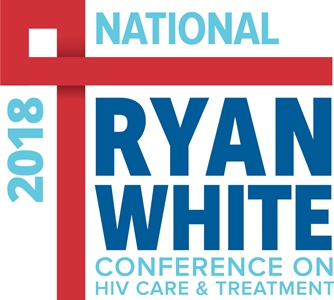Inside This Issue: Updates on HIV treatment and care, HIV in affected communities, the U.S. opioid epidemic, educational resources, and digital communication tools.
%20small.png)
HIV Treatment and Care
Viral Suppression Rates Reach Record Levels Among RWHAP Clients
In 2017, 85.9% of clients receiving medical care under the Ryan White HIV/AIDS Program (RWHAP) achieved viral suppression – a record level for the program. The 2017 figure is a substantial improvement over the 69.5% viral suppression rate among RWHAP clients in 2010. It also far exceeds the U.S. national viral suppression average of 59.8%, according to the Health Resources and Services Administration (HRSA). The 2017 viral suppression data is part of a 137-page report from HRSA’s HIV/AIDS Bureau (HAB) entitled, Annual Client-Level Data – Ryan White HIV/AIDS Program Services Report, 2017.
The new publication includes extensive data on the following:
- demographic characteristics of RWHAP clients, with detailed breakdowns by race/ethnicity, age, gender, transmission category, income, housing status, health coverage, and region; and
- retention in care and viral suppression rates, with breakdowns for many of the demographic categories listed above.
“In 2017, approximately 535,000 individuals received at least one Ryan White HIV/AIDS Program-funded service,” noted Laura Cheever, associate administrator of HAB. “This means that more than half of people living with diagnosed HIV in the U.S. received services through the Ryan White HIV/AIDS Program last year.” HRSA administrator George Sigounas also commented, “This report underscores the importance of supporting effective models of HIV interventions for linking people living with HIV into care, keeping them in care, and helping them adhere to their HIV medication.”

HIV and Affected Communities
Meta-Analysis Examines HIV Prevalence and Risk Behaviors Among Transgender Persons
Past research studies have shown that transgender women (transwomen) in the U.S. are at high risk for HIV infection, and that Black and Hispanic transwomen are particularly vulnerable. Although transgender men (transmen) have been less extensively studied, a growing body of research indicates that they are at increased risk for HIV infection. To learn more about HIV prevalence and risk behaviors in transwomen and transmen, CDC researchers conducted a systematic review and meta-analysis of 88 studies that estimated the prevalence of self-reported and laboratory-confirmed HIV infection, reported sexual and injection behaviors, and contextual factors associated with HIV risk of transgender persons living in the U.S.
The meta-analysis found that:
- The laboratory-confirmed estimated prevalence of HIV infection was 9.2% for transgender persons overall (combined prevalence for both transwomen and transmen).
- Among transwomen and transmen, HIV infection prevalence estimates were 14.1% and 3.2%, respectively.
- Self-reported HIV infection rates were 16.1% overall, 21.0% for transwomen, and 1.2% for transmen.
- However, the estimated HIV prevalence among Black transgender persons is much higher – 44.1%.
- Overall, nearly one-third (31.0%) of transgender persons participated in sex work, but the rates of participation were nearly three times higher among transwomen (37.9%) than transmen (13.1%).
“HIV prevalence estimates for U.S. transwomen were lower than previous estimates, but estimates for HIV prevalence and participation in sex work were higher when compared with transmen,” the CDC researchers noted. “Evidence gaps remain for transmen and the syndemic relationship of HIV, risky behaviors, and contextual factors specific to the transgender experience.”
Transforming Health Campaign Focuses on HIV Among Transgender Persons
Recognizing that transgender people face multiple obstacles that can affect their ability to stay healthy and that put them at risk for getting or transmitting HIV, the U.S. Centers for Disease Control and Prevention (CDC) recently launched the Transforming Health: Patient-Centered HIV Prevention and Care campaign. The initiative and associated website provides information and materials for health care providers, whole-care teams, social service providers, and transgender people, with the goal of reducing new HIV infections and improving the health of transgender people who are living with HIV. According to CDC, although the site’s content focuses on transgender women, many of the tools and information can be used to deliver patient-centered care for all transgender patients. Downloadable posters, palm cards, and banners featuring transgender persons are also available to help providers raise awareness about the importance of HIV prevention and testing in this population.
NIAID to Fund HIV Care and Prevention Research in Vulnerable Southern Communities
This year, the National Institute of Allergy and Infectious Disease (NIAID) plans to fund collaborative research to test new ways for implementing HIV treatment and prevention tools in counties in the U.S. South that have some of the highest new HIV diagnosis rates nationwide. The initiative will expand ongoing work at Centers for AIDS Research (CFARs) – a group of HIV-focused centers at academic institutions across the U.S. that conduct multidisciplinary research aimed at reducing the burden of HIV domestically and globally. CFARs operating in the southern United States are located at institutions in the following eight cities: Baltimore, Maryland; Washington, D.C.; Nashville, Tennessee; Durham, North Carolina; Chapel Hill, North Carolina; Atlanta Georgia; Birmingham, Alabama; and Miami, Florida. “With much of the research infrastructure already in place, the new effort is expected to yield critical findings with modest funding,” according to NIAID. Each locality could compete to receive up to $300,000 per year. “CFARs are our research boots on the ground, working in diverse communities nationwide,” noted NIAID Director Anthony Fauci. “This new initiative harnesses their local expertise to design smart, innovative ways to fill the gaps in HIV treatment and prevention care that are pervasive in the U.S. South.”
%20small.jpeg)
The Opioid Epidemic
Fentanyl Accounted for Nearly One-Third of U.S. Drug Overdose Deaths in 2016
The number of drug overdose deaths has risen dramatically in recent years, topping 70,000 in 2017. The drugs responsible for overdose deaths have also shifted, according to a new report, Drugs Most Frequently Involved in Drug Overdose Deaths: United States, 2011-2016, from the National Center for Health Statistics (NCHS). In 2011, the drug most frequently involved in drug overdose deaths was oxycodone, but that changed to heroin for the period from 2012 through 2015, and then to fentanyl in 2016. During that year, fentanyl was involved in nearly 30% of the drug overdose deaths in the U.S. From 2011 through 2016, the age-adjusted rate of drug overdose deaths involving heroin more than tripled, as did the rate of drug overdose deaths involving methamphetamine. However, the rate of drug overdose deaths involving fentanyl and fentanyl analogs increased even more rapidly – roughly doubling each year from 2013 through 2016, from 0.6 per 100,000 in 2013 to 1.3 in 2014, 2.6 in 2015, and 5.9 in 2016 – such that the 2016 rate was 10 times higher than that in 2013.
The NCHS data also reveal that the drugs most frequently involved in overdose deaths varied by the intent of the death. In 2016, the drugs most frequently involved in unintentional (accidental) drug overdose deaths were fentanyl, heroin, and cocaine, while the drugs most frequently mentioned on death certificates of persons who died as a result of drug overdose suicides were oxycodone, diphenhydramine, hydrocodone, and alprazolam.

Conference Coverage
Highlights from the 2018 Ryan White Conference
The annual National Ryan White Conference on HIV Care and Treatment is the largest national conference for comprehensive HIV care and treatment providers, RWHAP recipients, and stakeholders, sponsored and funded by the Health Resources and Services Administration’s HIV/AIDS Bureau. The main conference took place on December 11 to 14 in Oxon Hill, Maryland. It was also preceded by a clinical conference on December 9 to 11. The 2018 conference theme was “Catalyzing Success: Advancing Innovation. Leveraging Data. Ending the HIV Epidemic.” HIV.gov provided coverage of important conference news and developments through the following blog posts:
- Ryan White 2018: Clinical Conference Highlights
- Ryan White 2018: TA Highlights
- HHS Secretary Azar’s Remarks to the National Ryan White Conference on HIV Care and Treatment
- Day 1 Recap: 2018 National Ryan White Conference on HIV Care & Treatment
- Ryan White 2018: Evidence-Informed Interventions
- Day 2 Highlights: 2018 National Ryan White Conference on HIV Care & Treatment
- Latest Data from the Ryan White HIV/AIDS Program
- Ryan White 2018: Workforce Training
- Conversations about the Prevention Benefit of HIV Treatment and Plans to End the HIV Epidemic with Ryan White Leaders
- Day 3 Plenary Highlights Jurisdictional Approaches to Ending the HIV Epidemic
- Ryan White 2018: Wrap Up
- Increasing Hep C Testing, Treatment & Cure in the Ryan White Program: Conversation with Dr. Cheever from the 2018 National Ryan White Conference
- ICYMI [In Case You Missed It] – 4 Video Updates from the 2018 National Ryan White Conference on HIV Care and Treatment
%20-%20Stylized%20book%20with%20computer%20cursor%20without%20the%20words.jpg)
Educational Resources
Recent Reports, Fact Sheets, and Publications from Various Sources
You may be interested in checking out some of the following publications about HIV, the opioid epidemic, and related topics that have come out during the past few months from government agencies, think tanks, and other organizations. Since there are too many resources to discuss in detail here, we have simply provided the publication title, type, and source, together with a hyperlink to the full resource.
From AIDSinfo:
Recommendations for the Use of Antiretroviral Drugs in Pregnant Women with HIV Infection and Interventions to Reduce Perinatal HIV Transmission in the United States (link to web page summarizing recent updates to the guideline)
Updates to the HPV Section of the Adult and Adolescent Opportunistic Infections Guidelines (link to page summarizing recent guideline updates)
From CDC:
HIV Testing at CDC-Funded Sites: United States, Puerto Rico, and the U.S. Virgin Islands, 2017 (76-page report)
HIV and AIDS Data through December 2016: Provided for the Ryan White HIV/AIDS Program, for Fiscal Year 2018 (17-page report)
Behavioral and Clinical Characteristics of American Indian/Alaska Native Adults in HIV Care – Medical Monitoring Project, United States, 2011–2015 (report published in the Morbidity and Mortality Weekly Report)
HIV in the United States (2-page fact sheet)
HIV in the United States by Region (2-page fact sheet)
HIV Treatment Can Prevent Sexual Transmission (1-page fact sheet)
From The New York Times Book Review:
A Doctor’s Guide to What to Read on the Opioid Crisis (article and reading list)
From Funding for Community Action on AIDS (FCAA):
Last Mile Funding: Improving Practice in Philanthropic Funding of Community Action on AIDS (37-page report)
From RAND Corporation:
Considering Heroin-Assisted Treatment and Supervised Drug Consumption Sites in the United States (93-page report)
%20small.jpeg)
Social Media and Digital Communication
More Digital Tools and Tips from HIV.gov
In recent weeks, HHS’s HIV.gov blog site has published several posts in its ongoing digital marketing and outreach series. The series is designed to help agencies and organizations become more knowledgeable about digital tools and use them effectively in health communications. The newest posts include:
Advice from Digital Media Experts – This post includes 13 quotes from officials in federal and state agencies and community-based organizations on how to use new digital tools and why the tools are important.
Science, Money, Strategy, Tools, & Consequences: 5 Themes from 2018’s Most-Read Posts on the Federal Response to HIV – In 2018, nearly two-thirds of HIV.gov’s most-read blog posts focused on the Federal response to the HIV epidemic. A further analysis identified 5 key themes in those posts.
The Top 8 Digital Tools Blog Posts of 2018 – This item compiles and links to HIV.gov’s most popular digital communication posts of last year. At the top of the list was 5 Things to Know About Instagram.
What’s Coming in 2019? Social Media Trends to Watch – These trends include: 1) videos dominate; 2) artificial intelligence goes mainstream; and 3) social media influencers team up for social good (and compensation).
Strong Partnerships, Strong Communications: How to Use Your Network to Share Your Message – This post provides 3 tips on using social media for partnership development, support, and expansion for HIV programs – regardless of an organization’s size.
GSA Steps Up Security for .gov - This post describes actions that the U.S. General Services Administration has taken to improve digital security on the websites it manages, including HIV.gov.



